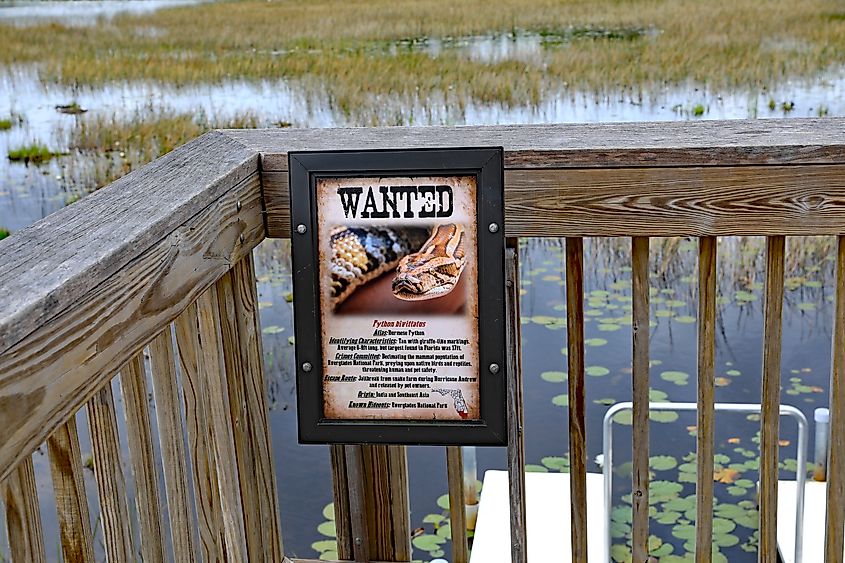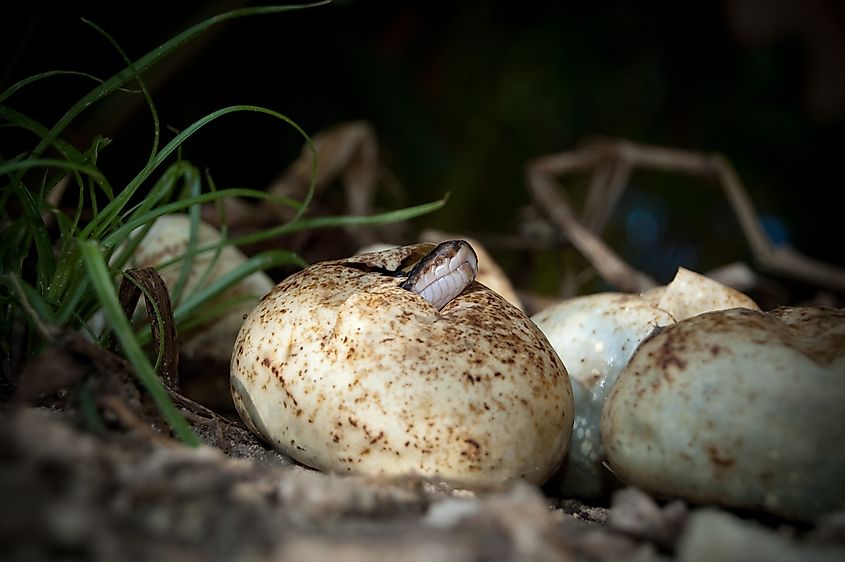
Invasive Asian Lungworm Found In Pythons Threatens Florida's Native Snakes
For decades, populations of Burmese pythons have been exploding in the Everglades - steadily squeezing the life out of native wildlife populations in the process. Now another, much smaller, but equally insidious invader appears to have leveraged the infamous Floridian outbreak. Living within the nearly 20-foot-long constrictors are three-inch-long lungworms (that also originate in the Orient) that have proven adept at infecting domestic snakes. In the last ten years, the Asian lungworm (aka snake lungworm) has been documented in 27 of the Sunshine State's counties, and within 19 species of snakes. These blood-sucking parasites severely weaken smaller hosts, making them vulnerable to disease and predation. So in conjunction with fighting an uphill battle against voracious invasive pythons, authorities must now contend with the even more prolific Asian lungworm, and the harm it poses to Florida's everchanging wilderness.
Pythons

In order to understand Florida's Asian lungworm dilemma, we must first recap how Burmese pythons (Python molurus bivattatus) took over the Everglades. Owing to a combination of intentionally released exotic pets and escapees in the wake of heavy storms (i.e., from homes, pet stores, and breeding facilities), these Southeast Asian serpents have come to dominate the vast, vulnerable, and invaluable ecosystem. What began as a single snake caught in the wild in 1979 has since escalated into an untenable situation involving hundreds of thousands of large apex predators spread throughout southern Florida. Now that they have nearly extirpated several species of small mammals (even alligators and deer are on the menu) the invasive pythons have begun expanding their boundary - even popping up in and around major urban centers. One, therefore, cannot help but wonder: are Burmese pythons going to invade more states?

Despite import and ownership crackdowns, amnesty programs for existing pet owners, enhanced hunting protocols, tracking devices, and even some creative theories to disrupt breeding patterns, the python problem just keeps getting worse and worse. Essentially, given the density and immensity of the area, and given that these snakes have found themselves in an environment that mimics their natural domain but without any of the predators (or other checks and balances), Burmese pythons have solidified their position in the Everglades. Not only that, but when they moved into the verdant wetlands, they brought more than just a propensity for hunting - they harbored another invasive species in their sizable bodies.
Parasites
In stark contrast to their primary, bus-length hosts, Asian lungworms (Raillietiella orientalis), snake worms, or tongue worms, as they are referred to across various sources, measure between three to four inches in length. After being artificially into southern Florida (at least a decade ago), these respiratory parasites (i.e. pentastomes) spread in their inevitable fashion. Here's the basic cycle. First, the infected pythons excrete lungworm eggs which are soon thereafter consumed by cockroaches. Intermediary species, such as frogs, lizards, and small mammals then gobble up the cockroaches, which now harbor hatched larvae. Soon enough, native snakes (to date, at least 19 of Florida's 46 species) snatch up the infected intermediaries. This is what the lungworms have been waiting for (so to speak). The larvae work their way into the lungs of the unsuspecting serpents, where they feed on blood, mature, and propagate. One unlucky black racer, for instance, was found with 107 adult worms in its lungs.

Whereas Burmese pythons have evolved resistance to lungworms (owing to their shared native habitats), Florida's snakes suffer from sepsis, pneumonia, inflammation, lesions, and even starvation (due to lack of energy) at the hands (or rather, mouths) of these foreign invaders. When the host snake is on death's door, the lungworm exits through the mouth. The one current exception (though it is not clear why) is the Florida cottonmouth. This iconic, venomous, and semi-aquatic snake has not shown the same rates of decline as a result of the lungworm epidemic.

Data collected by Snake Lungworm Alliance and Monitoring (SLAM) demonstrates that these parasites are spreading into central and northern Florida. And unlike Burmese pythons, which can't contend with frost, lungworms are poised to invade other southeastern states. There is no reason to think that humans, under normal circumstances, are subject to infection, but the disruption to the subtropical ecosystem as a whole is of growing concern.
Problems

As if Florida did not already have its hands full with invasive Burmese pythons, the Asian lungworms that have hitched a ride into the state are further escalating the issue. While the large constrictor snakes are multiplying like wildfire and consuming local animals at alarming rates, their domain is at least restricted by climate. Unfortunately, the same cannot be said of the foreign parasites. They work in a more covert but comparably violent fashion to weaken and kill native snakes, and they can spread faster and further than their initial hosts - well beyond the Everglades. More research is required in order to understand the extent of the problem, and hopefully, implement solutions. This is a tall order though, given how little is known about the lungworm (even abroad) and how difficult it is to assess the health of snakes slithering and swimming about the wetlands.











